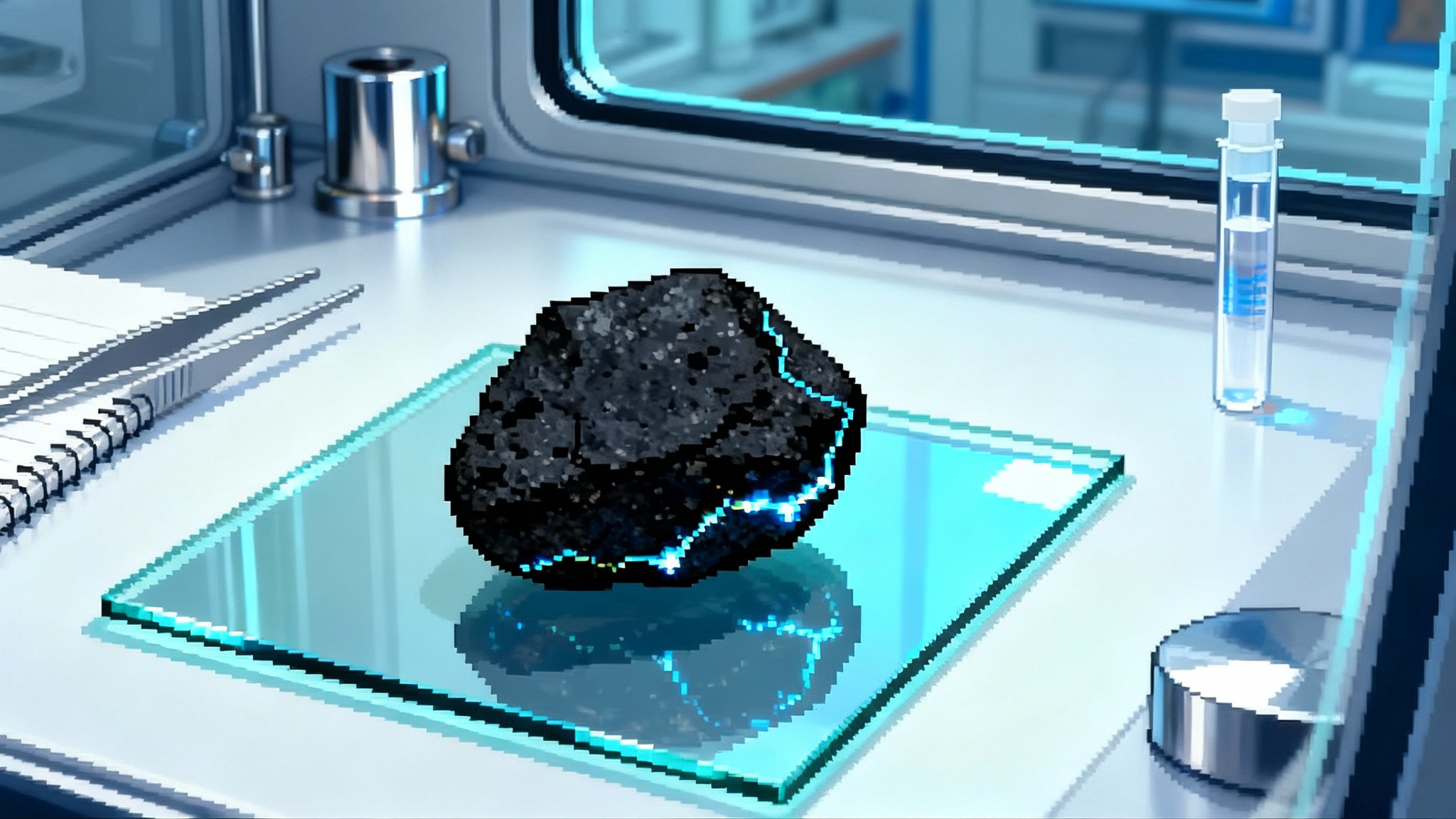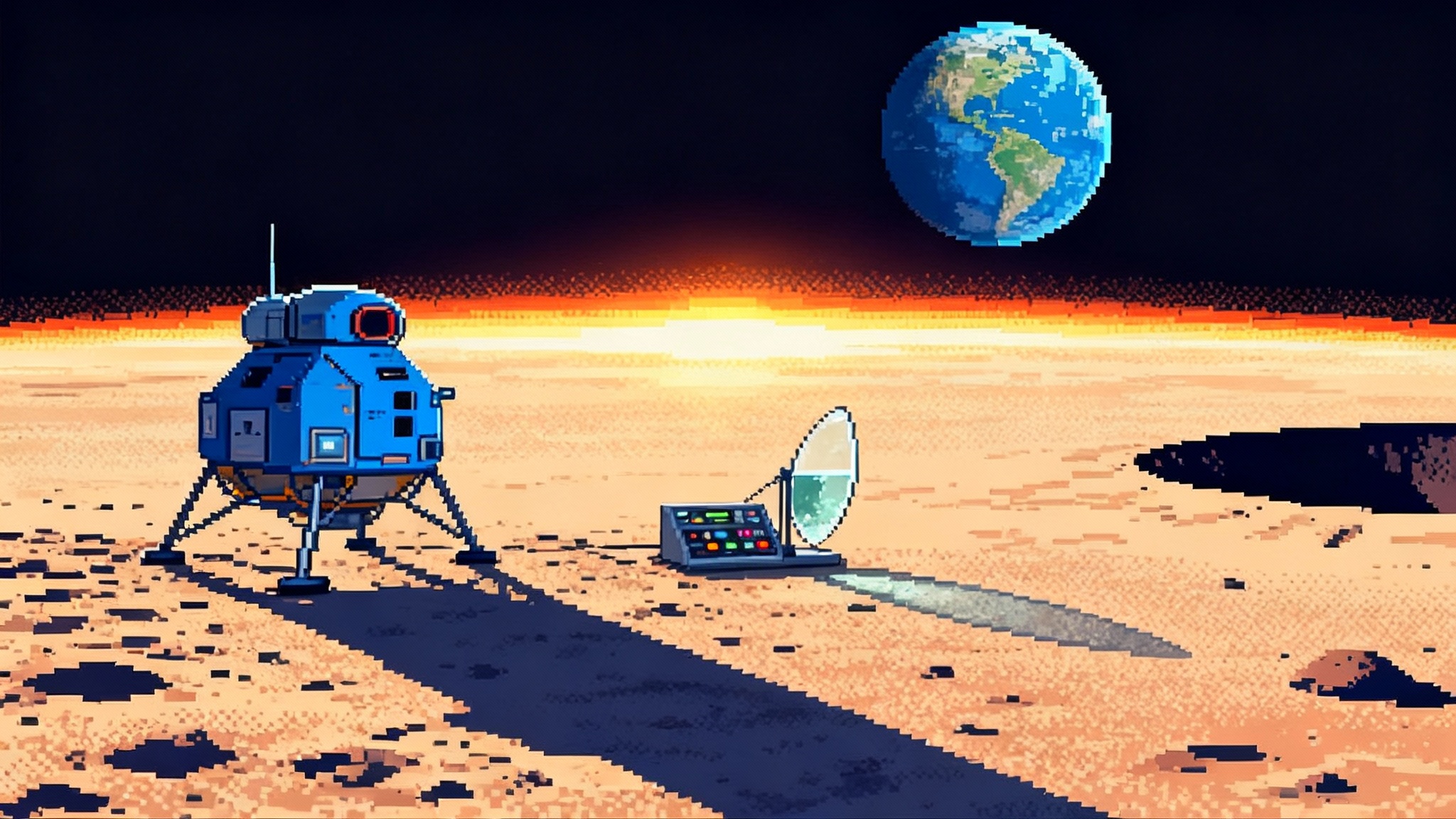Bennu’s 2025 surprise: OSIRIS‑REx sample rewrites life’s recipe
Peer-reviewed results released January 29, 2025 from NASA's OSIRIS-REx Bennu sample reveal abundant organics, ammonia-bearing compounds, all five nucleobases, and unusually pure, water-soluble phosphates. Here is why that shifts prebiotic chemistry from speculation to testable recipes and how the community can turn a headline into a foundation in 180 days.

Breaking: a carbon rich time capsule just changed the syllabus
On January 29, 2025, the first wave of peer-reviewed studies on NASA's Bennu sample landed with a simple but profound message. Inside that dark powder are abundant organics and salts from ancient brines, including ammonia-rich compounds, all five nucleobases used by DNA and RNA, a suite of amino acids, and, perhaps most surprising, water-soluble phosphates that are unusually pure and present as distinct grains. The sample, returned by NASA's Origins, Spectral Interpretation, Resource Identification and Security Regolith Explorer mission, places into one glovebox the two problems that have long vexed origin-of-life chemistry on early Earth: Where did the complex organics come from, and how did phosphate ever get into solution in the first place?
If you imagine early Earth as a kitchen, Bennu just delivered a sealed pantry full of shelf-stable ingredients and a few packets of instant stock. You can now make a real broth rather than a theoretical recipe. That is what has researchers excited in 2025.
Why a phosphate surprise matters
Phosphorus is the backbone of genetic molecules and the energy currency adenosine triphosphate. On Earth today, most natural phosphorus is locked in minerals like apatite that do not dissolve easily in water. Prebiotic chemists have spent decades inventing workarounds, from exotic activating agents to rare geochemical niches. Bennu offers a simpler picture. The sample contains magnesium sodium phosphate grains that readily dissolve, and they are unusually pure. Think of this as finding a jar of fine sugar rather than a sticky lump of molasses mixed with sand. The fewer impurities in a salt grain, the fewer side reactions that can hijack a delicate prebiotic pathway.
Equally important, Bennu's chemistry points to brines that evaporated on its long-vanished parent body. When brines dry, they sort and concentrate dissolved ingredients. In the lab, wet-dry cycles turn dilute soups into concentrated films where phosphorylation, the key step of attaching phosphate to a sugar or lipid, can proceed. Bennu looks like the raw materials for those cycles were present in space, long before any pond on early Earth had the chance to form.
What abundant organics mean in practice
The studies released in 2025 widen a door first cracked open by samples from the asteroid Ryugu. Bennu's powder includes an especially rich blend of soluble organics: nitrogen-bearing compounds, formaldehyde, amino acids, and all five nucleobases. That last detail matters. A full set of nucleobases removes a constraint on prebiotic synthesis models that needed to explain why some bases appeared in meteorites while others did not. The Bennu inventory says a complete set can be made and preserved in small bodies and then delivered.
If the phosphate is the sugar and the nucleobases are the spice rack, ammonia is the pantry assistant that makes recipes possible. Ammonia activates key reactions, helping build amino acids and energizing phosphorylation. Finding ammonia bound up in soluble organics means the cooking fuel was packed with the meal.
Delivery by asteroid, updated
The old picture was meteorites as messy care packages. Useful, yes, but degraded by Earth's air and water on arrival. The Bennu sample was sealed in space and opened in a nitrogen-purged clean room at NASA's Johnson Space Center. That controlled chain of custody matters, because water-soluble salts like halite and phosphate can dissolve or transform quickly in humid air. The purity and grain size of Bennu's phosphate would have been hard to preserve in an ordinary meteorite fall. Now we can measure it exactly, including isotopes that tell a story about temperature and origin.
Bennu itself is a rubble pile. The parent body likely saw water circulate through rock and then evaporate, leaving salts behind like the rings on a drying lake bed. That process concentrates reactants and selects for particular minerals. When pieces of that parent were smashed up and reassembled into Bennu, the chemical microenvironments were preserved in pebbles and dust. In short, the asteroid is a box of tiny chemistry labs that ran four and a half billion years ago.
The 180 day acceleration plan
The data are exciting. The right response is disciplined speed. Here is a concrete, time-boxed plan the community can execute between now and spring 2026.
-
Weeks 0 to 4: Register the baselines
- Publish a unified catalog for each grain: mass, location in the collector, handling history, nitrogen exposure time, and every instrument that has touched it. Include calibration files and control blanks. Post ring-signed preprints within two weeks of each new dataset.
- Run a round robin on a standard Bennu split across at least five labs for Raman spectroscopy, Fourier transform infrared spectroscopy, X-ray diffraction, and liquid chromatography mass spectrometry. The goal is not novelty. The goal is interlaboratory agreement within stated error bars.
-
Weeks 4 to 8: Map phosphate speciation at the micron scale
- Use synchrotron micro X-ray absorption spectroscopy and nano secondary ion mass spectrometry to measure oxidation state, cation partners, and oxygen isotopes for dozens of individual phosphate grains. Record whether grains are rims on clasts or veins, since location constrains fluid history.
- Quantify solubility under controlled ionic strengths that match measured Bennu brines. Deliver a public lookup table of dissolution rates versus temperature, pH, and cation mix.
-
Weeks 8 to 12: Put Bennu salts into prebiotic reactions
- Recreate wet-dry cycles with Bennu-relevant salt mixtures on inert substrates like borosilicate and basaltic glass. Track phosphorylation of ribose and glycerol and the yield of short oligomers. Use only energy inputs credible on small bodies: ultraviolet light, mild heat, and freeze-thaw.
- Run parallel control experiments with terrestrial phosphates to measure any catalytic advantage of Bennu minerals. If Bennu salts outperform, quantify by how much.
-
Weeks 12 to 16: Enantiomeric and isotopic fingerprints
- Measure the handedness of chiral amino acids and any sugar derivatives formed in the experiments. A near equal mix is expected at the start. Any drift must be carefully documented and attributed to specific steps, not assumed to be intrinsic to the sample.
- Complete nitrogen and hydrogen isotope mapping of ammonia-bearing organics. Distinct isotopic ratios will help separate truly extraterrestrial compounds from terrestrial contamination.
-
Weeks 16 to 24: Stress tests and pre-registration for replication
- Expose Bennu salt mixtures to simulated solar wind and micrometeoroid impacts in accelerator facilities. Document how quickly the reactive phases weather. For solar wind context, see IMAP at L1 mapping deep-space weather.
- Pre-register a community-wide replication effort of the highest-yield prebiotic reactions. Set acceptance criteria and analysis pipelines in advance. Decide now what results will count as a real effect.
This is a grind, which is why it will work. The dates are aggressive because the sample is finite and the window to coordinate global attention is not open forever.
Open curation and data, or it did not happen
Open practice is not a talking point. It is a checklist.
- Grain ledger: each fragment gets a citable digital dossier with weight, images, spectra, and chain of custody.
- First-class blanks: publish every blank and standard run alongside each sample run, not in a supplemental file months later.
- Unfiltered dumps: release level-zero data with readable metadata. Protect the sample by rate limiting drawdowns, not by delaying data.
- Methods that travel: publish protocols as step-by-step documents with photos of the bench setup, not only as a paragraph in a paper.
- Cross-lab drills: schedule quarterly ring tests on pre-agreed splits. Reward convergence as much as novelty.
- Negative result archive: log failed syntheses and null detections in a common repository so teams do not repeat dead ends.
- Pre-registered claims: for any headline finding, post the acceptance criteria and analysis plan before the last instrument run begins.
- Portable notebooks: require that every plot in a paper can be reproduced by a reader from a shareable notebook and a data package.
- Sample budget: track milligrams versus findings gained. Publish a quarterly balance sheet so the community can see what is left.
- Early-career seats: reserve analysis time for graduate students and postdocs who propose replication or extension studies.
NASA's Johnson Space Center curation team already set the bar with a nitrogen-purged environment, strict fastener-by-fastener opening, and an archive strategy designed to preserve most of the material for future instruments. Now the broader community needs to match that standard in analysis and sharing. Lockheed Martin Space built a spacecraft that nailed the delivery. The least we can do is make the most of the box it brought home.
How missions can pressure test the playbook
This new recipe for life's ingredients needs to be challenged by new kitchens. The good news is that the pipeline is real.
-
OSIRIS-APEX at Apophis
- The renamed spacecraft will meet asteroid Apophis shortly after its Earth flyby in 2029. Apophis is a stony S type, poor in carbon compared with Bennu. That contrast is an opportunity. If phosphate salts and evaporite textures appear on an S-type surface after Earth's tidal squeeze, that suggests salt chemistry is widespread. The team plans a near-surface thruster maneuver to loft dust for remote analysis. The lab work in 2025 should deliver spectral libraries for water-soluble phosphates, halite, and sulfate salts that the spacecraft can use. See the context in the SPHEREx 102-color spectral atlas.
-
Hera at Didymos
- The European Space Agency's mission will reach the Didymos system in 2026 to study the aftermath of the DART impact. Hera will not bring samples home, but it will map regolith mechanics in low gravity, quantify space weathering on fresh surfaces, and constrain how quickly fine salts could be lost. That is exactly the context needed to interpret surface-exposed chemistry on other bodies.
-
Tianwen-2 at Kamoʻoalewa
- China's sample return mission launched in May 2025 and is targeting a quasi-satellite of Earth with a planned return in 2027. Regardless of geopolitics, science wins if the community agrees on cross-compatible protocols. For background, see Tianwen-2 sets pace in sample return. If Kamoʻoalewa sample splits are analyzed with the same round robin, the field can tell which chemistries are common across small bodies and which are unique to Bennu.
Pressure testing is not only about new detections. It is about falsification. For example, if Apophis shows no sign of water-soluble phosphates on or near the surface, that will push the community to look deeper into Bennu's parent body history and the specific path that concentrated clean phosphate grains there.
What to watch between now and spring
- A materials science view of phosphate: expect papers that track crystal defects, epitaxial growth on serpentine, and the role of sodium versus magnesium in solubility.
- A geochemistry model that unifies brine evolution and grain purity: look for work that reproduces Bennu's salt sequence in microreactors that cycle between cold and mild heat.
- A biology-friendly reaction suite: watch for teams that attach phosphate to ribose and glycerol using only Bennu salts, ultraviolet light, and wet-dry cycles. No exotic reagents allowed.
- Chain of custody visualization: a live dashboard that maps every grain's journey from the sample head to the last instrument.
The deeper lesson
We often say asteroids are time capsules. Bennu is more than that. It is a pantry that survived delivery. The 2025 results show that space can mix a complete set of life's ingredients and pack them with ready-to-dissolve phosphate. That does not prove life began this way, but it makes the path chemically credible and easy to test. The right response is to move from awe to work. Six months of tight experiments, open books, and coordination across missions can turn a headline into a foundation. If we do that, the next time a spacecraft dips into a rubble pile, it will be carrying not only curiosity, but a validated recipe to compare against.








